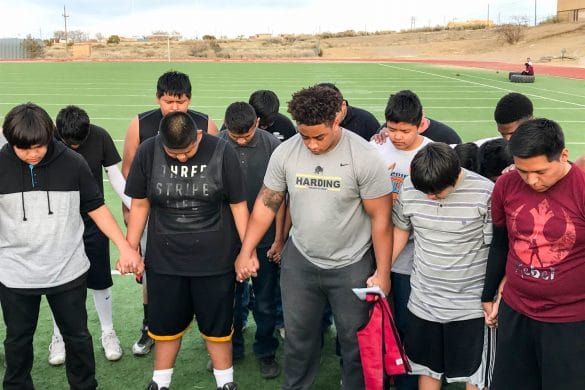Harding University will celebrate its 90th Homecoming this weekend. Throughout the years that Harding has been in existence, only five men have reigned as president of the university.
Harding College was formed from students of Harper College and Arkansas Christian College. The two colleges merged in 1924, creating Harding College, located in Morrilton, Ark. J.N. Armstrong was chosen to become president of the college because of his many years of service as president of Christian colleges. Armstrong decided to name the college in honor of his father-in-law, James A. Harding. Harding College moved to Searcy after purchasing the property from Galloway Women’s College in 1934 for $75,000.
In 1936, J.N. Armstrong wrote a letter to George S. Benson asking him to assume the presidency of Harding because Armstrong felt that Benson could raise the funds needed to make Harding successful. Benson raised enough to pay off the mortgage just three years into his presidency.
“The work of paying off the mortgage was a combined effort of J.N. Armstrong and Dr. Benson along with a committed faculty and donations,” Debbie Howard, Women for Harding president said. “From what I have read, Dr. Benson was most definitely good at fundraising. He certainly played a huge role in eliminating Harding of her debt, and once the debt was paid off, I can only imagine what a tremendous relief it was. Now the leadership and faculty could rest a bit easier. To have sustained the college during the Depression and to have been able to secure donations from people miles away was quite an accomplishment.”
Under Benson’s administration, Godden Hall was replaced with the Administration Auditorium and Harding College received accreditation. Benson continued to serve until 1965 when Dr. Clifton Ganus, Jr. began his presidency of Harding College. Ganus brought a new and exciting agenda to the college. In 1979, Harding College became a university because of immense growth. In 1980, Harding University sent the first class to Harding University in Florence, Italy. The Walton Scholar Program also began in 1985 under the Ganus administration, allowing students from Latin American countries to experience the Christian education that Harding offers.
“I think this is a great opportunity for these students who may not experience this kind of quality education elsewhere,” Chancellor Emeritus C.L. Ganus, Jr. said. “The Walton Scholar Program has given them a chance to experience freedom, democracy and free enterprise, and they can take what they have learned back to their home countries, which was Sam Walton’s intention behind this program.”
Ganus became Chancellor of the university in 1987 when Dr. David B. Burks became the fourth president. Under the Burks administration, the study abroad programs at Harding grew immensely, sending 48 percent of graduating students abroad to seven campuses around the world and more than 40 countries.
During the Burks presidency, many buildings on campus were built and almost every building was renovated. Because of the increase in student enrollment, the university saw a need for more student housing. The Legacy Park construction project began in 2012. The apartment buildings in Legacy Park honor families who have had an influential role at the university. Burks became Chancellor in 2013 when he passed the key to the university to current president Dr. Bruce McLarty.
Since McLarty’s first year began, he has developed a university mission known as, “a community of mission.” McLarty is connected to the student body through Twitter and Instagram. Harding continues to grow and McLarty has predecessors to heed advice from.
If you have ever wondered which HU president you are most like, go to the Student Publications Facebook or Twitter accounts and follow the link to the online quiz.






